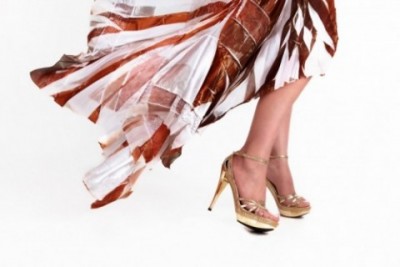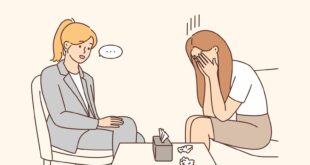Many women adore their high heels and wouldn’t consider giving up this fashion item, even in light of the fact that they have been shown to contribute to knee and back problems, ankle injuries, falls, shortened calf muscles, and an awkward gait. If putting those heels “on hold” is still not a desired option, moderation would be key. Matthew G. Garoufalis, DPM, recommends avoiding heels over two inches.
Studies
One study of 1000 U.S. adults, age 18 and over, revealed nearly half (49%) wear high heels and 71% complained of these shoes hurting their feet. (Source 1)
Using EMG (a means of recording electrical activity produced by skeletal muscles), another study revealed an increase in several parameters when the subjects were walking in high heels. A major increase in bone-on-bone forces within the knee joint was found. (Source 2) There may also be a causal effect regarding a higher incidence of osteoarthritis in women’s knees as compared with men.
X-ray Vision
Michael Liebow, DPM, AACFAS, a podiatrist at Foot and Ankle Specialists of Maryland, has an X-ray photograph of a foot in a high-heel shoe. The ball of the foot is angled at almost 90 degrees to the bones in the rest of the foot (i.e., the angle of the toes to the rest of the foot).
How Bad Can it Be?
(1) The typical functional demands of muscles and tendons of the lower extremities are altered. (Source 3) Excess pressure is placed on the knees.
(2) The calf, hip, and back muscles become tense (to maintain balance). This causes muscle fatigue and strain.
(3) The chest is pushed forward. The hips and spine are forced out of alignment. There is diminished shock-absorbing function of the spine’s S-curve.
(4) Pressure is increased on the balls of the feet. This downward force causes the wearer to adjust her body in attempt to maintain balance. The higher the heel, the more pressure there is on the forefoot.
(5) The head and the thoracic spine are displaced. Poor alignment can lead to muscle overuse and back pain.
(Source 4)
Anatomical damage can result over years of daily use of high heels. Calf muscles can shorten. Tendons and ligaments can thicken. The Achilles tendon can shrink. Narrowing of the spinal cord, nerve impingement, bulging vertebral discs, and sciatica can result. (Source 4)
Solutions and Recommendations:
(1) Avoid wearing heels for long periods of time.
(2) Stretch leg muscles before and after wearing heels.
(3) Limit heel height to two inches.
(4) Buy shoes later in the day (when feet are their largest).
(5) For shoe style, avoid pointed toes.
(6) Vary footwear styles each day.
Although “heel height” is not the reference, this verse is a good one to remember for physical and spiritual safety:
“Wherefore let him that thinketh he standeth take heed lest he fall.” (1 Corinthians 10:12 / KJV)
Would you consider choosing a shorter heel or wearing heels less often? What symptoms have you experienced that may be related to your high heels?
Sources:
(1) http://www.apma.org/Media/PRdetail.cfm?ItemNumber=13076
(2) http://www.ncbi.nlm.nih.gov/pubmed/22431211
(3) http://www.ncbi.nlm.nih.gov/pubmed/22241055
(4) http://www.thespinehealthinstitute.com/news-room/health-blog/how-high-heels-affect-your-body
 The Bottom Line, Ministries Christian News, Articles, & Poetry
The Bottom Line, Ministries Christian News, Articles, & Poetry 





Interesting article for sure! I had to chuckle with the reference to 1 Corinthians
Thank you, Emily!